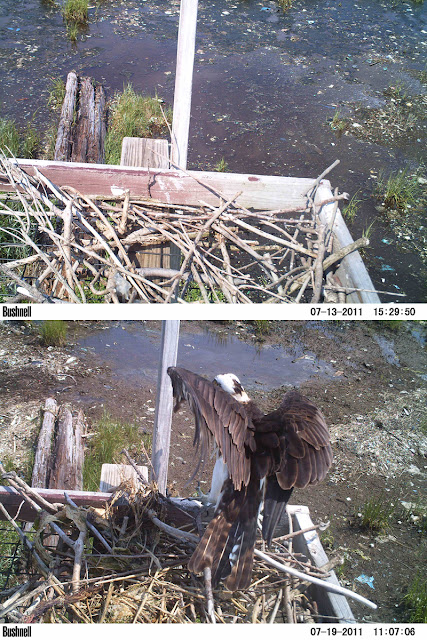Like these 13 charadrius semipalmatus. That's more semipalmation than some birders can handle.
Rocky Point serves as a rest stop during their Canada - Caribbean migration. While the plovers relaxed, least sandpipers piped their hearts out. Yellowish legs distinguish them from their look-alike cousins the semipalmated and western sandpipers.
These minuscule birds (about the length of a chickadee) probed and piped everything, including hollow phragmites stalks.
This one fancies itself a heron.
At times they piped each other.
But the day's most exciting visitor was the salt marsh matriarch herself, Dr. Judith S. Weis.
Judith and her husband Pete, also a biologist, have spent five decades investigating salt marshes, mangroves, estuaries, and man's impact upon them. She co-authored this book, an excellent primer, reference and historical narrative for all things salt marsh. It accompanied me throughout this entire cleanup project.
The book devotes a chapter to the myriad pollutants that end up in marshes, some of which lurk right under my nose at Rocky Point. Here, Pete points out the core of a large piece of castaway lumber. The green color indicates it's been treated with copper, chromium and arsenic (CCA). CCA wood is resistant to insect infestation and rot, which is why it's often used for outdoor applications. Copper, which causes the green tint, is extremely toxic to marine organisms as it leaches out. And a 12-foot 2x6 board of CCA-treated wood contains about an ounce of arsenic, enough to kill over 200 people. So don't throw green wood in your bonfire.
Judith was pleased with Rocky Point and recommended we continue our cleanup strategy of wood and debris removal. "Nature will take care of the rest," she added. She also remarked that she'd never seen a salt marsh quite like Rocky Point, due to the placement of the dunes and limited tidal exchange. Toward the end of the tour we were joined by NPS park interns and staff. Clockwise from upper left, Pete, Judith, Budhiono, Sarah, Jessica, Mary-Jo, Doug and Tony.
Thanks again to everyone for coming out.
Camera trapping was slow this past week. Here's the tally: mockingbird 1, robin 1, osprey 3 (over 2 days). I also caught USFWS biologist Brian in the act of cleaning up on his day off. It was exactly 95 degrees when this picture was taken.
An interesting Bushnell Trophy Cam flaw was illuminated as a result of Brian's efforts. Every time he entered from camera right, the camera would catch him dead center (above). But when he entered camera left, it wouldn't catch him until he already cleared 3/4 of the frame (below). By my rough approximation, the camera is around 40 feet from his line of approach.
Have any other Bushnell Trophy users experienced this issue? Leave a comment if so. Anyway, here's the best full-load shot I could salvage considering the limitations. Notice how Brian gets a running start to power his heavily laden wheelbarrow through the mud. Bravo.
Sarah and I cleared a section of middle marsh we call Willet Cove. This spot had served as a sort of willet headquarters during the past months. With any luck, spartina grass will colonize this bare patch next season, providing a safer and hopefully more successful nesting site.
High of 87, max humidity 90%, average wind NW @ 9 MPH, .7 low tide @ 11:38 AM. Moon 17% visible.
Water level recorded at 4 inch mark.
Birds seen in marsh: lesser yellowlegs, black skimmer, least tern, common tern, semipalmated plover, least sandpiper
Birds seen in bay: laughing gull, herring gull, common tern, black skimmer, least tern, semipalmated plover, willet, black-bellied plover














































